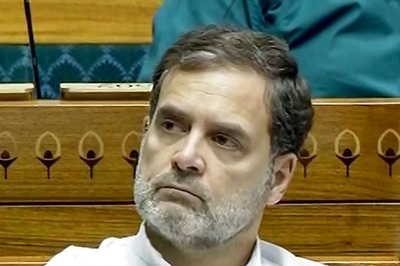
views
Mumbai : Under pressure to do more to cut a $49 billion mountain of bad debt, India's state-owned banks are reversing years of lax recovery efforts, naming and shaming smaller borrowers and even using big TV screens at shopping malls to advertise seized assets for sale.
India's bad debt pile, dominated by corporate loans, is at its highest in a decade, swollen by an economic slowdown, loose lending and, in many cases, banks' own failure to do enough to chase down rogue debtors.
Now, bank executives say pressure - from a government needing to accelerate economic recovery and from a central bank that wants company owners to take more responsibility - has left little choice but to get tougher and faster.
Tactics include targeting smaller borrowers with aggressive 'name and shame' campaigns, with placards and groups of bank employees protesting outside offices, for example, and putting pressure on investors or executives at larger firms.
P.K. Malhotra, a deputy managing director at the State Bank of India, the country's largest bank, said his team received extra training, including in psychology, and was systematically chasing up payments, as others in the bank accelerated sales of seized assets. "The focus (is) on getting court cases expedited. Less on the paperwork and more on the fieldwork," said Malhotra.
Executives say it's too early to measure overall success, but there have been some wins for India's bruised banks.
Suzlon Energythis year sold its German unit, Senvion, for 1 billion euros ($1.1 billion) in cash - less than what it paid to buy the asset in a deal completed in 2011. It crystallised a huge loss after banks piled pressure on the loss-making wind-turbine maker to cut its debt.
More than two dozen lenders led by SBI are looking for an investor in Electrosteel Steels Ltd, whose near-$1.4 billion bank loan is strained. Rather than 'evergreening' the loan - a process of regular review and renew - lenders are getting involved in the buyer talks.
EARLY WARNINGS
Gross bad loans at Indian banks rose to 3.1 trillion rupees ($48.83 billion) as of end-March, or 4.6 percent of total loans, according to central bank data. Including loans that are stressed but not yet classified as bad, total troubled loans made up 11 percent of total lending.
Banks say they are now moving faster to bring that down, stepping in at the first sign of trouble, sending out more officers to chase borrowers and putting more people on the job through specialised branches. Some are trying to speed up the sale of seized assets by advertising them on large screens at shopping malls.
"These days people are getting on to the job the moment you have an early warning signal that something may happen in a company and you have thousands of crores at stake," said a senior banker at a big state-run bank.India uses crore to denote a unit of 10 million.
SBI has set up branches focussed solely on recovering loans, and, to speed up cumbersome paperwork, encourages managers to snap pictures of themselves on seized assets - proof of the change of ownership. It plans to set up a web portal to showcase all the seized assets available for auction.
"Companies can sometimes fall in love with their assets, but bankers can't afford to do that," said SBI's Malhotra.
Union Bank of India Chairman Arun Tiwari said his state-run lender has changed its system to put three separate general managers in charge of recovering different classes of loans - large, middle and small. "You have to go out in the field," he said.


















Comments
0 comment